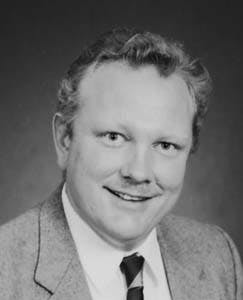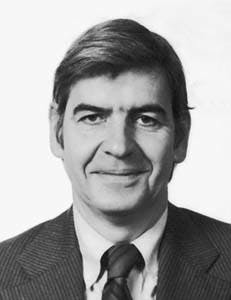Venezuelan projects advance to develop world's largest heavy oil reserves
Greg Croft, Karl Stauffer
Pantera Petroleum Inc.
San Leandro, Calif.
A number of joint venture projects at varying stages of progress promise to greatly increase Venezuela's production of extra heavy oil.
Units of Conoco, Chevron, Total, Arco, and Mobil have either signed agreements or are pursuing negotiations with affiliates of state-owned Petroleos de Venezuela SA on the development of huge reserves of 8-10° gravity crude.
These projects in no way exhaust the country's potential. A 1984 United Nations study concluded that, using cutoffs for heavy oil of heavier than 20° gravity and less than 10,000 cp viscosity, 93% of the world's heavy oil in-place is located in Venezuela.
Large heavy oil resources are present in the oil producing areas of eastern and western Venezuela, and the largest are in eastern Venezuela's Orinoco heavy oil belt.
Orinoco heavy oil belt
This vast area, with more than 1.2 trillion bbl of 6-13° gravity oil in place, is the world's largest hydrocarbon accumulation.
Descriptions of the oil as tar or bitumen do not do the area justice, since the oil is mobile under reservoir conditions and shallow wells typically produce a steady hundred barrels per day with a rod pump.
The belt has been divided into four areas which, from east to west, are called Cerro Negro, Hamaca, Zuata, and Machete.
The Cerro Negro area, with an estimated 215 billion bbl of heavy oil in place, is operated by Lagoven, one of Pdvsa's three upstream operating affiliates. Corpoven operates the Hamaca area, with 220 billion bbl of oil in place.
Maraven has the Zuata area, the largest with about 500 billion bbl of oil in place. Corpoven's Machete area is farther west, deeper, and undeveloped at present.
Producing depths in the heavy oil belt range from 750-4,500 ft, and the unconsolidated Tertiary reservoir sands have permeabilities of 1-2 darcies and porosities of 25% or more.
Conoco, Maraven
In a deal signed last November, Conoco's joint venture with Maraven in the Zuata area will produce 120,000 bbl of 8° gravity crude daily to feed a huge coker at Jose, near Puerto la Cruz on the Caribbean coast. The $800 million coker will yield 102,000 b/d of 21° gravity synthetic crude.
This synthetic crude will replace Mexican Maya as a feedstock to Conoco's Lake Charles refinery. The coke will also be exported to the U.S. Overall investment in the project is estimated at $1.4 billion. The 55,000 acre contract area is expected to produce 1.5 billion bbl of extra heavy oil over the 35 year life of the agreement.
Total consortium project
Another Maraven joint venture, with France's Total and Norway's Statoil and Norsk Hydro, will use a catalytic process to upgrade 170,000 b/d of Zuata heavy oil. Japan's Itochu and Marubeni were partners in the $2.25 billion project initially but have since left the consortium. Upgrading represents almost 70% of the capital cost of this gigantic project.
Arco, Corpoven in talks
Arco is discussing a project with Corpoven to develop 164,000 b/d of Hamaca crude to be upgraded to a lighter synthetic crude at Jose on the coast and exported to refineries in the U.S.
The proposed $2.1 billion upgrader will use the HDH process developed at Intevep, Pdvsa's state-of-the-art research facility in the mountains west of Caracas. Once again, production can be developed for about $5,000/daily bbl, and most of the investment is for upgrading the heavy, metals-rich crude.
Cerro Negro project
Negotiations are also under way between Mobil and Lagoven to develop part of the Cerro Negro area and upgrade 100,000 b/d of extra heavy crude into a 31° gravity synthetic crude.
Only $336 million will be needed to develop that production volume, but the upgrader will be a $1.5 billion investment. Cerro Negro has the shallowest reservoirs in the heavy oil belt, so development costs there are lower.
Orimulsion opportunities
The Cerro Negro area is operated by Lagoven and currently produces about 20,000 b/d which is used for Orimulsion, an emulsion of extra heavy crude and water that's used as a boiler fuel in the U.S. and Europe. The emulsion contains 29.5% water and has a calorific value of 12,700 Btu/lb.
The high content of sulfur and metals requires the use of pollution control equipment in power plants using Orimulsion, and the fuel is priced accordingly.
A joint venture of Conoco and Statoil with local engineering firms Distral and Jantesa will develop part of the Cerro Negro area to increase production of Orimulsion. New contracts, including an important one with Florida Power & Light, require a substantial increase in production and blending capacity.
Western Venezuela
In the traditional producing area on the eastern shore of Lake Maracaibo, Maraven has made extensive use of cyclic steam injection in its 90,000 b/d onshore Tia Juana field.
A continuous steam injection project in the M6 area of the same field was shut in during 1986 because of low oil prices. Maraven has also successfully used cyclic steam in Lagunillas and Bachaquero fields. Oil from these fields ranges from 11-15° gravity and can be marketed without upgrading. The fields produce from shallow, poorly consolidated Miocene sandstone reservoirs with porosities often exceeding 30% and permeabilities of more than 1 darcy.
Chevron back in Boscan
Chevron signed an operating service agreement with Maraven last December covering the Boscan heavy oil field in western Venezuela. It plans to increase production from 80,000 b/d to 115,000 b/d the next three years. Chevron discovered the huge field near the city of Maracaibo in 1946.
The recovery factor at Boscan remains open to debate, but Maraven estimates that the field's Eocene sandstone reservoirs contain more than 30 billion bbl of 10° gravity, asphaltic crude oil in place. Reservoir depths of 7,000-9,000 ft are unusually deep for a heavy oil field.
As part of the agreement, Maraven becomes a joint venture partner in Chevron's west coast asphalt business and will supply crude to Chevron's refinery at Pascagoula, Miss., and Chevron's asphalt plants in Oregon, Washington, and New Jersey.
Plenty left to develop
The four Orinoco projects described above will have a combined production of over 550,000 b/d, but they only represent development of a small part of the area of the heavy oil belt.
Depending on oil prices and capital availability, many more projects could be accommodated. Over the long term, this will mean good news to U.S. refiners and oil consumers, as well as an opportunity for enormous investments on the upstream side.
The extra heavy crude is not expensive to produce but requires costly upgrading. The tremendous volume of the heavy oil resource makes Venezuela unique among areas open to international investment in the oil industry.
The Authors
Gregory D. Croft worked 11 years for Chevron Overseas Petroleum on 2D and 3D seismic interpretation projects in West Africa and Latin America and also in business planning. He left Chevron in 1994 to form Pantera Petroleum, a San Leandro, Calif., consulting firm specializing in the petroleum geology of Venezuela. He has an MS degree in geophysics from Stanford University.
Karl W. Stauffer worked for Royal Dutch/Shell and later Chevron in the 1960s-70s. He was loaned from Chevron to Petroleos de Venezuela from 1977-79, during which time he prepared a series of studies including a regional evaluation of the petroleum potential of the Maracaibo basin. He left Chevron in 1994 to join Croft in founding Pantera Petroleum. He has a PhD in geology from Stanford University.
Copyright 1996 Oil & Gas Journal. All Rights Reserved.


